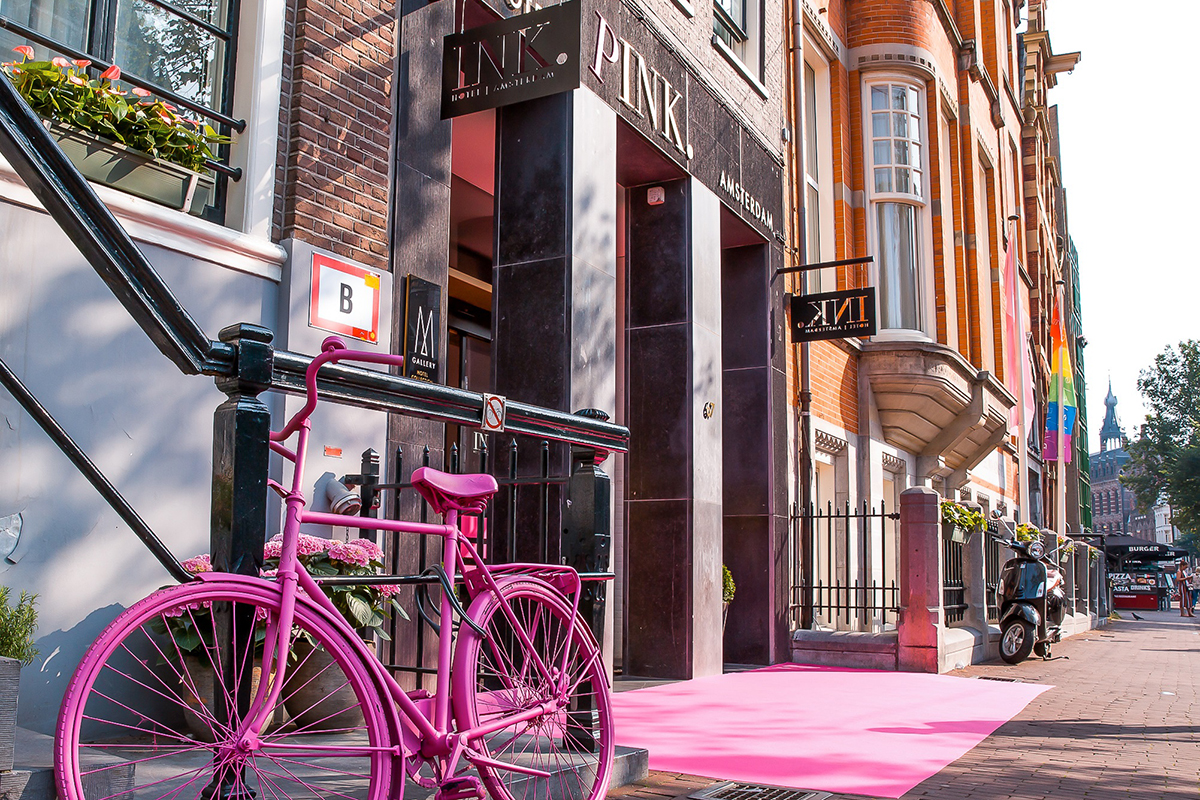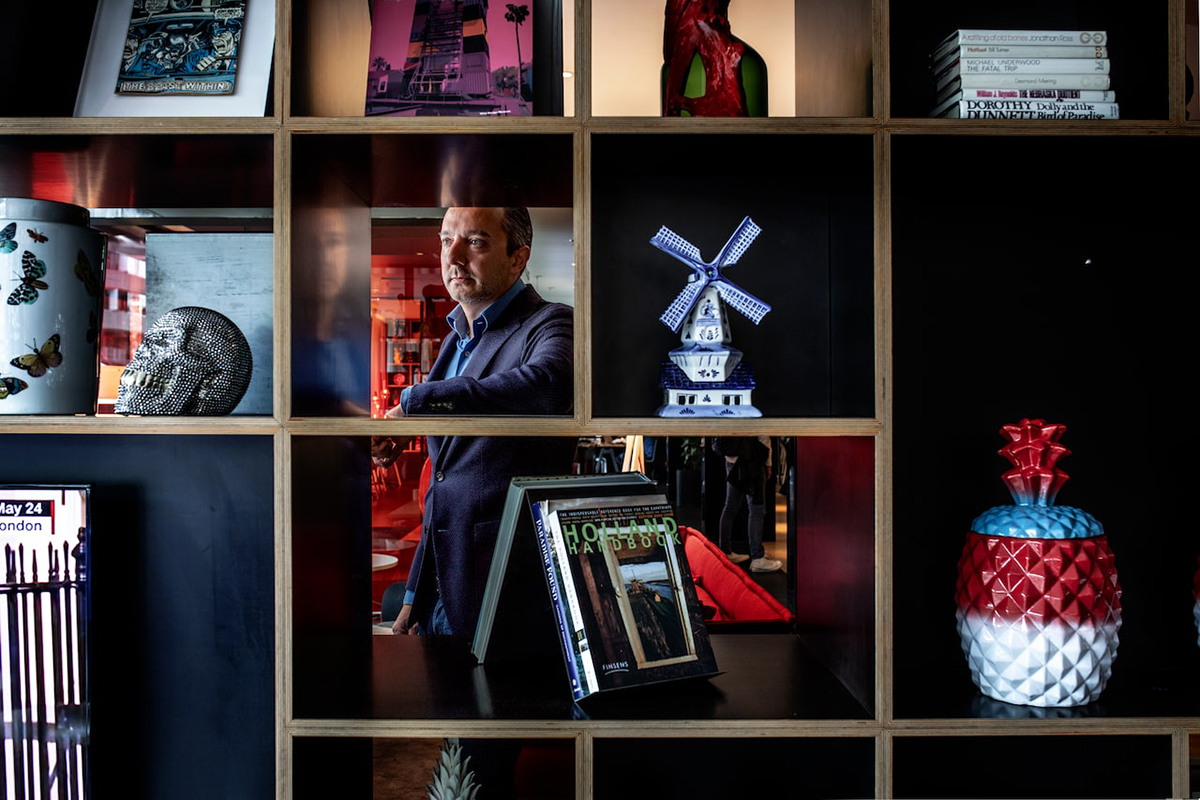
Comfort and luxury essential in the hotel room
Offering the convenience that guests know and don't yet have
For Michel Ruijgrok, Art director of E.S.T.I.D.A, it goes without saying: "Apart from the overall atmosphere, the hotel room is the most important part of a hotel. It's what you come for." He shares his vision of the ideal room, in which he believes it is okay for a hotelier to push the boundaries.
According to Ruijgrok, the bed remains the most important element in the room. When E.S.T.I.D.A designs hotel rooms, it is never immediately visible from the doorway. "That gives an unpleasant feeling, so we sometimes tussle with the floor plan to avoid this," he says. When it comes to the bed, he says comfort is key. "The budget determines what quality a hotel chooses, but fortunately for hotels, good box springs are already available for a basic price. You can also improve a bed by using a topper."

More choices
"As hotels receive fewer business and more leisure guests, we are seeing more and more beds with one mattress instead of two separate mattresses. It used to be the other way around." Guests also expect more choices. "As a hotel, you have to assume an average hotel guest. However, you can offer a choice between a soft or firm pillow. We notice that more and more budget is being set aside for these things." There is no doubt that hygiene is also very important. "We therefore opt for removable material when covering headboards and box springs, without lapsing into a chain-like hotel bed."
Ruijgrok wants to abandon the classic layout of a hotel room. "People are often used to a conventional arrangement: when you enter, you find the closet on the left and bathroom on the right. Why is that actually the case? This is something we like to play with. We also opt for openness, to create more space with fewer metres. "Besides the bed, the bathroom is the part of the room that guests come for. 20 years ago, every hotel wanted a rain shower. Now that we all have them at home, on the contrary, there is more demand for a bathtub again. We like to create an open bathroom - with the toilet separate - , so you could sleep in the bath, so to speak. This is the kind of luxury people don't have at home. We then provide privacy not with walls, but with stickers or curtains."

Both in the bathroom and the rest of the hotel room, good lighting is very important, says Ruijgrok. "It is very smart to make lighting dimmable, although this is often costly. Overall, it is good to provide extra lighting. After all, older guests - think of ageing... - need more light to read properly. Not only on the bed, but also at the seat."
When guests go to sleep, it is of course important that it is just dark. "Therefore, make sure you have good light-proof curtains. These give a sense of warmth and security. Of course, you can then colour in with the whole story. For example, we often apply printed curtains." Printed carpet is also widely used by E.S.T.I.D.A. The trend of opting for PVC flooring in new hotel rooms is over as far as Ruijgrok is concerned. "You don't just have to vacuum PVC, you also have to mop it. Carpet is warm and good for acoustics. If you use it, you can play with colour and designs. Incidentally, PVC with the right rug can also be beautiful."

Hospitality and surprise
According to Ruijgrok, the hotel room is a surrogate for home. "You therefore want to offer the convenience that guests know and don't already have. Everyone has a good TV at home, but we increasingly watch streaming services and therefore take a laptop with us. It's important to be able to charge that properly. You can also offer a Chromecast. Such facilities allow guests to entertain in their own way." By extension, a classic minibar is no longer enough. "I think guests should be able to grab a glass of wine or a snack at the hotel after a long day. Coffee, tea and drinks should be available day and night as far as I am concerned. That really has a sense of hospitality."
Despite the feeling of being at home, Ruijgrok says guests are allowed to be a bit stimulated. "It has to be appropriate, but it is interesting to go beyond your own boundaries and step out of your comfort zone. A hotel room is a place where you can choose a more extreme design or more colour than at home." Sleeping in a unique room is possible, among others, at hotel Estheréa in Amsterdam. "We have been working for this classically decorated hotel for a long time. Because of its special location on the Singel, it invests heavily in luxury panelling and decoration. We have also been able to give very businesslike hotels a new, comfortable look.

Who visits your hotel?
According to Michel Ruijgrok, it is clear that the focus is shifting from business to leisure guests. There is also an increasing focus on other groups. "Increasingly, families or groups of friends are visiting a hotel together. There is a lot of demand for hotel rooms where they can stay together. It's important that all guests can stay on the same level and therefore don't have to sleep on a clunky rollaway bed. For children, hotels then place bunk beds. I think for adults, a sofa bed is the best choice. We choose this in our Haarlem Staats hotel as well."
Heeft u vragen over dit artikel, project of product?
Neem dan rechtstreeks contact op met ESTIDA.
 Contact opnemen
Contact opnemen



